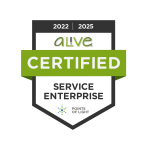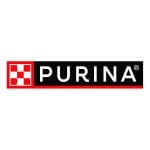If you’ve found injured wildlife, call the VBSPCA Wildlife Referral line at 757-263-4762 for assistance. You may also use the following dos and don’ts to determine if and when you need to intervene.
PRINTABLE WILDLIFE DOS AND DON’TS GRAPHIC
When to help:
- If you find an orphaned baby animal that is not fully covered with feathers/fur or has pink skin showing through, this animal needs to be rescued. Never leave a sick or injured animal exposed in the yard. Get them inside to safety and get help.
- If you find an injured or orphaned animal and there are predators or other immediate dangers present, this animal needs help. Predators include cats, dogs, crows, blue jays (or other omnivorous birds), unsupervised children, etc. Examples of immediate danger also include animals near a road or water. Move the animal to safety first, then watch to see if it is okay or in need of rescue.
- An animal needs to be rescued quickly when there is visible blood or other obvious signs of trauma. Also, the presence of flies or fly eggs means there is blood or infection.
- Any wildlife that is injured is in need of assistance, please call our referral hotline. Our volunteers will guide you through the next steps and can provide you with resources for seeking care for wildlife if needed.
If it’s been determined that help is needed, adhere to the following stabilization instructions to give wildlife the best environment for temporary care:
- Place the animal in a small box. Make sure that the box has adequate ventilation by punching small air holes in the top before placing the animal inside. Line the box with a hand towel or clean rag (do not use paper towels), and place the secured box (tape the top if necessary) in a warm, dry, dark, and quiet location away from people and pets.
- Avoid constantly checking on the animal. Stress can be detrimental to their health and can cause further injury.
- Please follow common-sense precautions for your own safety, such as washing your hands thoroughly after handling wildlife.
- Many people are afraid to handle wildlife, even tiny babies. If you are nervous, gently drop a cloth over the baby and gently scoop him up. Take any other precautions as necessary for personal protection.
What Not to Do:
- NEVER Provide Food or Water. Feeding an injured, cold, or dehydrated animal can cause serious medical complications, including death. Please do not try to give food or water unless you are instructed to do so by a wildlife rehabilitator.
- Do Not DIY. While it may be tempting to search online, not all information is created equal. Please do not be tempted to “do-it-yourself” with wildlife care and treatment. Wildlife has very special needs and require more than good intentions.
- Do Not Treat Wildlife as Pets. Never consider keeping wildlife as a pet! Not only is it illegal, it is also cruel. This can cause wildlife to depend on humans and not learn how to fend for themselves, reducing chances of survival in the wild and increasing the likelihood of being harmed by other humans and/or roadways. All local wildlife is protected by the Virginia Department of Game and Inland Fisheries, and birds are also protected by the U.S. Fish and Wildlife Service.
- Do Not Delay. Please get the animal to professional help right away. Time is critical, and even a delay of an hour can prevent wildlife from being saved. Follow stabilization information for immediate care and then transport the wildlife as soon as possible.
- Do Not Handle Wildlife More Than Necessary. Excess handling of wildlife may cause further injury, as well as creating extra stress on them. Creating undue stress also includes repeatedly “checking” on wildlife unnecessarily. This can be more difficult when children are around and want to help. Teaching children to be kind to wildlife is a wonderful thing; however, it is very important to the wellbeing of wildlife to reduce as much stress as possible and keep wildlife in a quiet, dark space. Stress can be fatal in some cases, so reducing human sights and sounds is best.
For more information, please visit vbspca.com/wildlife




Last Updated: January 14, 2020 by vbspcaadmin
Wildlife Dos and Don’ts
If you’ve found injured wildlife, call the VBSPCA Wildlife Referral line at 757-263-4762 for assistance. You may also use the following dos and don’ts to determine if and when you need to intervene.
PRINTABLE WILDLIFE DOS AND DON’TS GRAPHIC
When to help:
If it’s been determined that help is needed, adhere to the following stabilization instructions to give wildlife the best environment for temporary care:
What Not to Do:
For more information, please visit vbspca.com/wildlife
Category: Uncategorized
Search
Ways to Give
Annual Partners
To view our Donor Privacy Policy, click here.